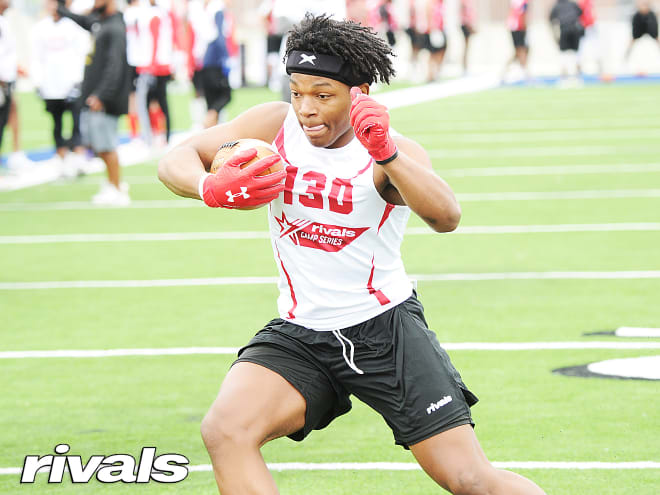NCAA extends recruiting dead period until June 30

The recruiting dead period that initially went into effect on March 13 in response to the coronavirus pandemic has now been extended until at least June 30, the NCAA announced Wednesday night.
MORE: Four-star RB Justin Johnson sets first official visit
CLASS OF 2021 RANKINGS: Rivals250 | Position | Team | State
CLASS OF 2022: Top 100
Normally a busy season in college football recruiting, this spring has been devoid of campus visits and all in-person contact between coaches and prospective student-athletes. Rivals250 running back Cam’Ron Valdez out of Texas had an official visit originally scheduled with Oklahoma State in April that previously had to be canceled. Now, Valdez’s June official visits with Texas Tech and Utah will also be eclipsed by the extended dead period.
“It slows (my recruitment) down, meaning I can’t get a look as soon as I wanted to make a commitment,” Valdez stated.
Football Bowl Subdivision recruiting has seen a wave of commitments since the beginning of April. Several prospects have openly stated they plan to just secure their spot in a class, even if it is with a school they have yet to visit. Others who did their due diligence, though, were just hoping to have June visits available to help answer those final questions.
“I was expecting it,” said Ohio defender Darryl Peterson, who had June official visits planned with finalists Alabama, Michigan, West Virginia and Wisconsin. “I kind of have a good idea of all the places I am considering, so it didn’t really hit me as hard as it’s hit some other guys who haven’t been to any of the places they are considering.”
The extension also eliminates summer camps, a popular evaluation tool for college programs. Many universities had already announced the cancellation of their own summer camps prior to the NCAA’s extension of the dead period.
Originally, the dead period was set to last until April 15. That was extended until May 31 before being pushed out until June 30 on Wednesday. It followed a nearly four-week dead period that was placed in February for the first time this decade. Barring no further extensions of the dead period, prospective student-athletes will have only had 12 days at the beginning of March to visit schools in a five-month span.
“It’s a bummer not being able to take visits right now,” said California cornerback RJ Regan, who was scheduled to visit Wisconsin in June. “It’s affecting me and my family to see what schools have to offer and for me to learn more about the coaches and players and the community. Hopefully by mid-summer we’ll be able to take official visits and go from there.”
If the rest of the recruiting calendar remains intact, the month of July will start in a dead period as well that only sees a brief respite in the final week of July when a brief quiet period opens. Prospects are allowed to have contact with coaches on their campus during a quiet period.
The extension of the current dead period effectively eliminates the spring official visit period. Initiated to coincide with an early signing period set in December, the spring period allowed prospective student-athletes to utilize their five allotted official visits during a time when they were not involved with their high school football seasons. Unless further amendments to the recruiting calendar are made, official visits will now have to be squeezed into that three-month timeframe at the beginning of senior year before prospects are expected to sign in December.
Further modifications to the recruiting calendar that would help alleviate the burden to prospective student-athletes and the college programs recruiting them would be to open up a contact period in the month of July. This could be extended into August depending on the status of college and high school football seasons.
Another potential solution to the issues created by the prolonged dead period is suspending the December Signing Period for the class of 2021, allowing January to be an open official visit month before prospects are expected to sign their letters of intent.
The class of 2021 is most immediately affected with most prospects either postponing decisions, or speeding up their commitments to grab increasingly disappearing scholarship spots. The Spring Evaluation Period and summer camps are also an extremely important evaluation opportunity for rising juniors, and prospects in the 2022 class who were counting on this off-season to impress coaches now find themselves behind the curve. On the other side of the coin, college coaches now have to make scholarship decisions based on fewer evaluations and less information.
Whatever further steps are taken, the coronavirus pandemic has already devastated this year’s recruiting calendar and further complicated a complex process for prospective student-athletes in the classes of 2021 and 2022.
